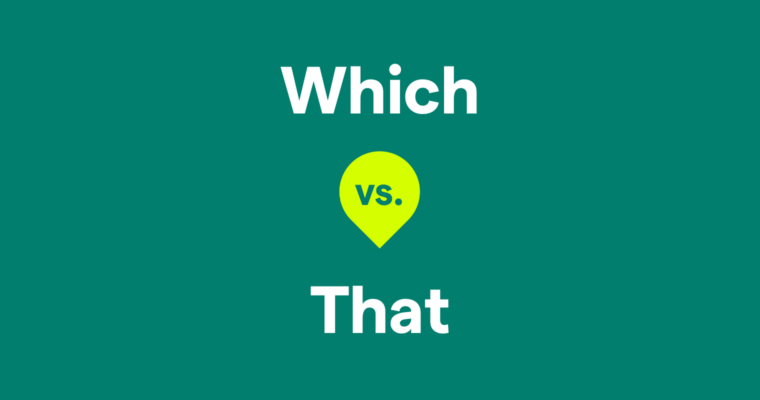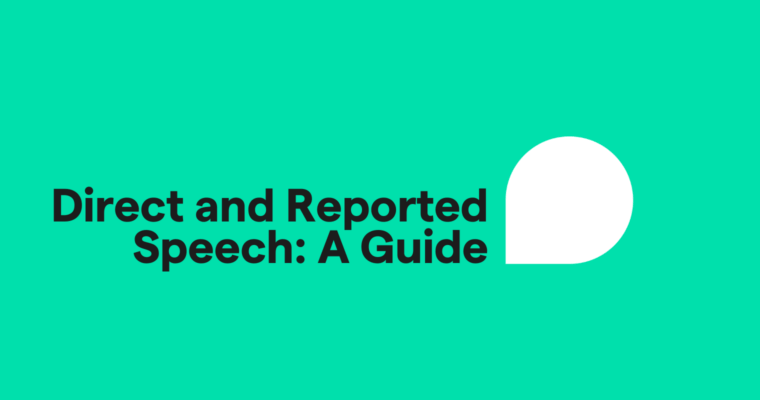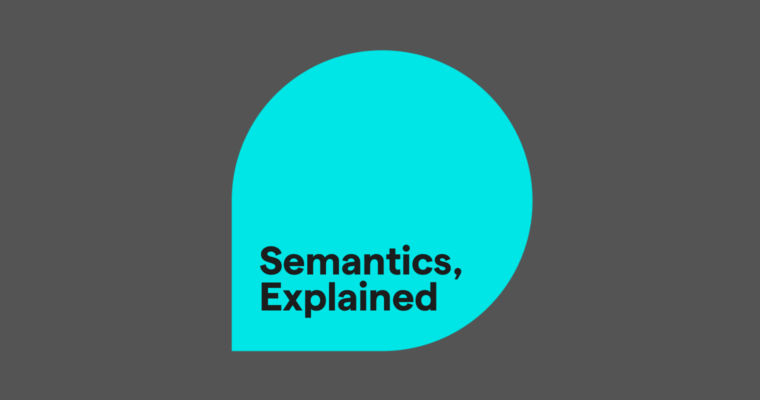
- Which introduces nonrestrictive clauses, whereas restrictive clauses are introduced by that.
- That with a restrictive clause adds essential details and clarification, whereas which with a nonrestrictive clause adds nonessential details and context.
- Use commas with which, but generally avoid them with that except in a parenthetical phrase.
- Knowing how to use which and that correctly is important because these words have different meanings and thus affect sentences’ meanings.
- If the details are crucial to the sentence, use that. If they aren’t crucial, use which.
Which and that are probably words you use frequently. Despite their frequency, you might not have thought much about the difference between which and that. But these words play very different roles in your writing, and sometimes, they can be confusing. Read on to learn more about using which versus that and when to use which versus that.
Table of contents
Which vs. that: What’s the difference?
When to use which in a sentence
When to use that in a sentence
How to remember when to use which vs. that
Know when to use which vs. that
Which vs. that: What’s the difference?
The difference between which and that depends on whether the clause it introduces is restrictive or nonrestrictive.
- With a restrictive clause, use that.
- With a nonrestrictive clause, use which.
So, what’s the difference between restrictive and nonrestrictive clauses? The short answer is this: A restrictive clause, also known as an essential or defining clause, contains information that’s essential to the sentence’s meaning. A nonrestrictive clause, also known as a nonessential clause, includes information that may be helpful or interesting but doesn’t impact the sentence’s meaning.
Here’s a quick example of each:
- Restrictive: The literature course that I need to graduate is only offered on Fridays.
- Nonrestrictive: The literature course, which covers works from a diverse collection of authors, is only offered on Fridays.
What parts of speech are which and that?
Which is a relative pronoun or a determiner. Relative pronouns are words that replace their antecedent—i.e., a noun—and that connect clauses within a sentence. A determiner is a word used before a noun to clarify it. Take a look at these examples:
- Relative pronoun: Their names, which were in alphabetical order, took up two pages.
- Determiner: Which ducks did you see in the pond?
That is a demonstrative pronoun, relative pronoun, adverb, conjunction, or determiner. A demonstrative pronoun is a pronoun that identifies a specific person, place, or thing. An adverb modifies another word, clause, or sentence, typically adding helpful detail. A conjunction joins clauses or sentences. Take a look at these examples of that in action:
- Demonstrative pronoun: After touring the brick house, we decided we wanted to buy that one.
- Relative pronoun: The notebook that I brought is red.
- Adverb: Was it really that hot out yesterday?
- Conjunction: They ran so fast that they wore out their shoes.
- Determiner: That cake, which Bruce baked, is sugar-free.
Restrictive vs. nonrestrictive clauses
A restrictive clause is a clause that modifies a noun, and by extension its sentence, in an essential way. A nonrestrictive clause is a clause that modifies a noun in a nonessential way.
Before we go any further, let’s define clauses. A clause is a unit of a sentence that contains a subject and a predicate. In some cases, a clause can be a sentence on its own, or capable of standing on its own. These are known as independent clauses. When a clause cannot stand on its own as a sentence, it’s known as a dependent clause.
Restrictive clauses are introduced with that. Nonrestrictive clauses are introduced with which. Here are a few examples of both:
Why it’s important to use which and that correctly
Knowing how to use which and that in a sentence correctly makes your writing easier for readers to understand. It makes your meaning clearer, which reduces the likelihood of it being misinterpreted. This is especially important in academic, business, and formal writing, where clarity is a writer’s highest priority.
When to use which in a sentence
Use which in a sentence when it includes a nonessential clause. Nonessential clauses add “flavor” to sentences without changing their core meaning.
Which and nonrestrictive clauses
Which introduces nonrestrictive clauses, which add nonessential information. To determine if a clause is nonrestrictive, take it out of the sentence and see if the sentence’s meaning has changed. If it hasn’t, you’ve got a nonrestrictive clause. Here are a few examples of nonrestrictive clauses that use which.
How to punctuate which
When you use which with a nonrestrictive clause, it’s always offset from the rest of the sentence with commas.
Which doesn’t always need a comma, though. When which used in a part of speech other than a nonrestrictive clause, other punctuation marks may be correct, or it might not need a punctuation mark.
Examples of which in sentences
When to use that in a sentence
There are lots of ways to use that in a sentence. In this post, we’re primarily discussing restrictive and nonrestrictive clauses, but it’s important to remember that that can also be a demonstrative pronoun, determiner, relative pronoun, adverb, or conjunction. In any case, that introduces key information that affects the sentence’s meaning.
That and restrictive clauses
A restrictive clause is essential to a sentence’s meaning. Use that when introducing a restrictive clause. Here are a few examples of that used with restrictive clauses:
Notice how in these sentences, that narrows down information or specifies meaning. If we swapped in which, these sentences would read very differently.
See how the first example now makes the bike’s broken seat feel like a detail, rather than the reason why it’s in the garage? Or how the second example doesn’t make much sense now? That’s because in these sentences, the restrictive clause is crucial to their meaning.
How to punctuate that
Unlike nonrestrictive clauses, restrictive clauses are not offset by commas. When you use that with a restrictive clause, no additional punctuation is needed.
However, when that is used in other ways, additional punctuation may be necessary. One example is sentences where that introduces a parenthetical phrase. A parenthetical phrase is a phrase that adds information to a sentence without affecting the sentence’s structure. It may be offset by parentheses, commas, or dashes.
So, what’s the difference between a parenthetical phrase and a nonrestrictive clause? Almost nothing. Functionally, they’re basically the same thing. One difference is that a parenthetical phrase can be a single word or just a few words, unlike a nonrestrictive clause, which must contain a subject and a predicate.
When you use that to introduce a parenthetical phrase, close the phrase with a comma.
In other cases, that may follow a colon or dash.
Examples of that in sentences
How to remember when to use which vs. that
Because nonrestrictive clauses add removable information, it’s easy to remember to use which if you think of the paper that a sandwich comes wrapped in. It is disposable, and so are clauses with which.
For clauses that aren’t disposable, use that. You can also use this guide when you’re stuck between using that and which as a pronoun.
Common mistakes to avoid with which and that
One common mistake that writers often make is using which without a comma, as in this example:
A similar error many writers make is using a comma with that:
Another common error is overusing that in formal writing. Whether you’re writing in a formal, professional, or casual tone, the same grammatical rules apply. Use that when it’s necessary and correct, such as when that introduces a restrictive clause or acts as a demonstrative pronoun. Otherwise, remove any instances of that that aren’t needed. Here are a few examples:
- Awkward: Climate change is an issue that can be divisive.
- Better: Climate change can be a divisive issue.
- Awkward: They promised that they would consult the whole team in the future.
- Better: They promised to consult the whole team in the future.
Know when to use which vs. that
Which and that are two distinct, equally important words to use in your writing. While which introduces details that make a sentence more interesting, that adds crucial information that can change the sentence’s meaning. They can also both serve as pronouns, reducing redundancy. In the pronoun role, which still introduces nonessential information while that introduces essential information.
Knowing how to use which and that correctly is a valuable skill that will make you a stronger writer. If you’re ever unsure of which is correct in a sentence, Grammarly can help by providing suggestions and catching mistakes in your writing.
Which vs. that FAQs
What’s the main difference between which and that?
The main difference between which and that is that which introduces nonessential information and that introduces essential information. Put another way, clauses that begin with which add interest, but don’t change a sentence’s meaning. Clauses that begin with that do change a sentence’s meaning.
Can you use which and that interchangeably?
No, you cannot use which and that interchangeably. Which and that have distinct meanings, and although there is some overlap in the parts of speech they play, they have different grammatical purposes.
How do you use commas with which and that?
Nonrestrictive clauses, the clauses that incorporate which, are offset from the rest of their sentences with commas. Restrictive clauses, which incorporate that, are not offset with punctuation.
What’s an easy way to remember how to use which vs. that?
The easiest way to remember whether to use which or that in a sentence is to remove the clause that contains which or that and see if it changed the sentence’s meaning. If it did, use that. If it did not, use which.






